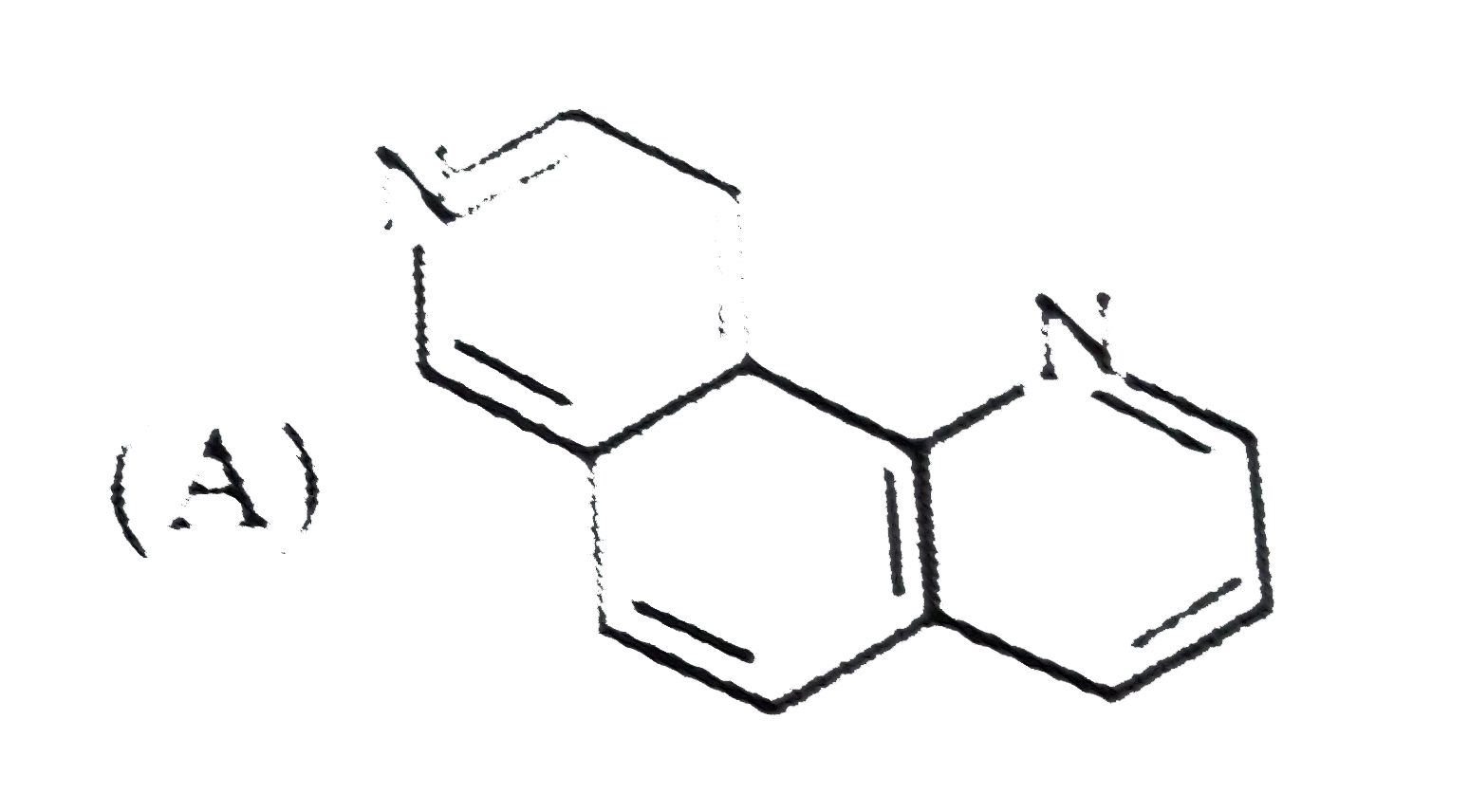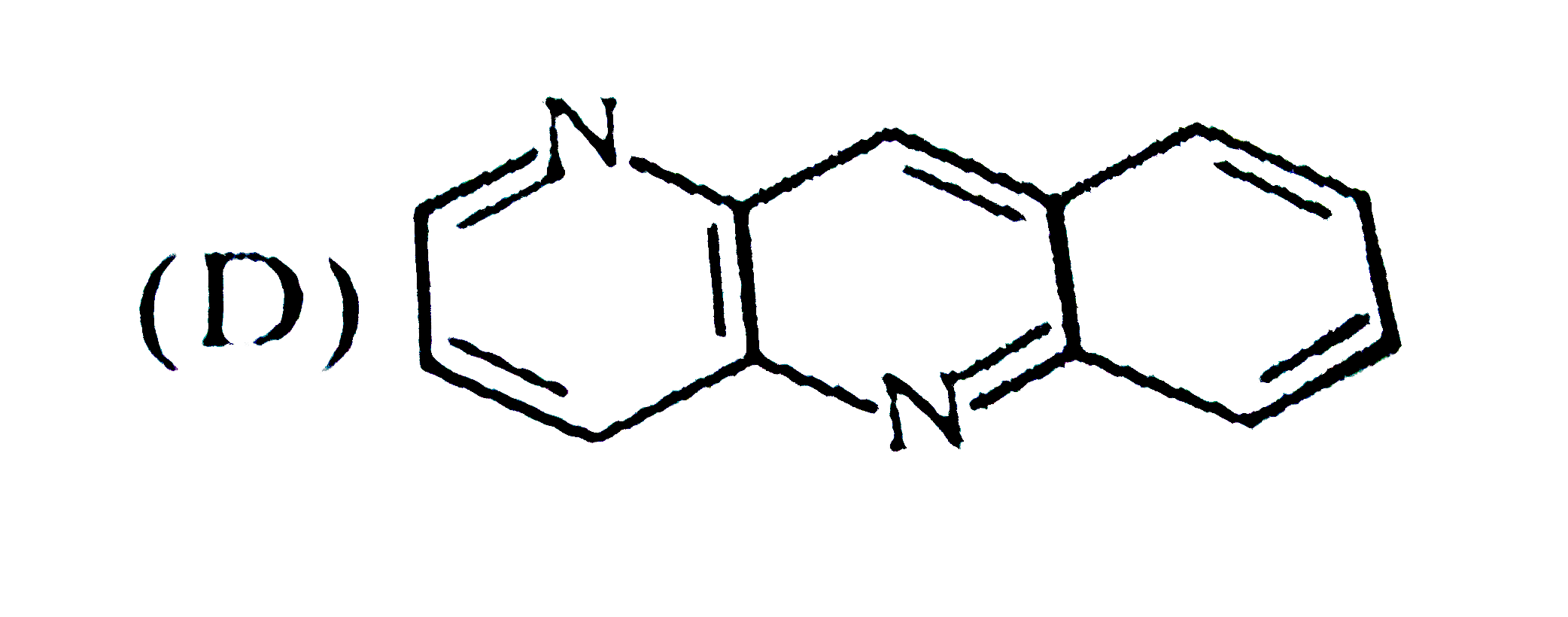Which of the following is most basic in nature ?
NH3
CH3NH2
(CH3)2NH
C6H5N(CH3)2.
The correct Answer is:C
To determine which of the given compounds is the most basic in nature, we need to analyze the basicity of each compound based on the factors that influence basicity, particularly focusing on the availability of the lone pair of electrons on nitrogen and the presence of electron-donating or electron-withdrawing groups.
1. Identify the Compounds: The compounds we need to analyze are:
- A) NH3 (Ammonia)
- B) CH3NH2 (Methylamine)
- C) (CH3)2NH (Dimethylamine)
- D) C6H5NH2 (Aniline)
2. Determine the Structure and Electron Availability:
- NH3: Has a lone pair of electrons on nitrogen. No electron-donating or withdrawing groups.
- CH3NH2: Has a lone pair of electrons on nitrogen and one methyl group which is an electron-donating group (via +I effect).
- (CH3)2NH: Has a lone pair of electrons on nitrogen and two methyl groups, which provide a stronger +I effect than one methyl group.
- C6H5NH2: Has a lone pair of electrons on nitrogen, but the lone pair can participate in resonance with the benzene ring, reducing its availability for protonation.
3. Evaluate the Basicity:
- Basicity increases with the availability of the lone pair of electrons on nitrogen.
- The presence of electron-donating groups (like methyl groups) increases basicity, while electron-withdrawing groups decrease it.
- In C6H5NH2, the lone pair is delocalized into the benzene ring, making it less available for bonding with protons, thus decreasing its basicity.
4. Rank the Compounds:
- (CH3)2NH (Dimethylamine) will be the most basic due to the presence of two electron-donating methyl groups, which enhance the availability of the lone pair.
- CH3NH2 (Methylamine) is next, with one electron-donating methyl group.
- NH3 (Ammonia) follows, as it has no substituents that enhance basicity.
- C6H5NH2 (Aniline) is the least basic due to resonance stabilization of the lone pair.
5. Conclusion: The most basic compound among the options is (CH3)2NH (Dimethylamine).
- A) NH3 (Ammonia)
- B) CH3NH2 (Methylamine)
- C) (CH3)2NH (Dimethylamine)
- D) C6H5NH2 (Aniline)
- NH3: Has a lone pair of electrons on nitrogen. No electron-donating or withdrawing groups.
- CH3NH2: Has a lone pair of electrons on nitrogen and one methyl group which is an electron-donating group (via +I effect).
- (CH3)2NH: Has a lone pair of electrons on nitrogen and two methyl groups, which provide a stronger +I effect than one methyl group.
- C6H5NH2: Has a lone pair of electrons on nitrogen, but the lone pair can participate in resonance with the benzene ring, reducing its availability for protonation.
- Basicity increases with the availability of the lone pair of electrons on nitrogen.
- The presence of electron-donating groups (like methyl groups) increases basicity, while electron-withdrawing groups decrease it.
- In C6H5NH2, the lone pair is delocalized into the benzene ring, making it less available for bonding with protons, thus decreasing its basicity.
- (CH3)2NH (Dimethylamine) will be the most basic due to the presence of two electron-donating methyl groups, which enhance the availability of the lone pair.
- CH3NH2 (Methylamine) is next, with one electron-donating methyl group.
- NH3 (Ammonia) follows, as it has no substituents that enhance basicity.
- C6H5NH2 (Aniline) is the least basic due to resonance stabilization of the lone pair.
Topper's Solved these Questions
- BOOK - DINESH PUBLICATIONCHAPTER - CYANIDES, ISOCYANIDES, NITROCOMPOUNDS AND AMINESEXERCISE - Selected Straight Objective Type MCQs50videos
CYANIDES, ISOCYANIDES, NITROCOMPOUNDS AND AMINES
- BOOK - DINESH PUBLICATIONCHAPTER - CYANIDES, ISOCYANIDES, NITROCOMPOUNDS AND AMINESEXERCISE - LINKED COMPREHENSION TYPE15videos
CYANIDES, ISOCYANIDES, NITROCOMPOUNDS AND AMINES
- BOOK - DINESH PUBLICATIONCHAPTER - CYANIDES, ISOCYANIDES, NITROCOMPOUNDS AND AMINESEXERCISE - Unit test - 820videos
CYANIDES, ISOCYANIDES, NITROCOMPOUNDS AND AMINES
- BOOK - DINESH PUBLICATIONCHAPTER - CO-ORDINATION COMPOUNDS EXERCISE - Brain storming multiple choice question12videos
CO-ORDINATION COMPOUNDS
- BOOK - DINESH PUBLICATIONCHAPTER - D-AND -F BLOCK ELEMENTSEXERCISE - BRAIN STORMING MULTIPLE CHOICE QUESTIONS (MCQS)13videos
D-AND -F BLOCK ELEMENTS
Similar Questions
Knowledge Check
- Question 1 - Select One
Which of the following si most basic:
A B
B C
C D
D
- Question 2 - Select One
Which of the following is most basic in aqueous solution ?
ACH3NH2B(CH3)2NHC(CH3)3NDNH3. - Question 3 - Select One
Which of the following is most basic amine ?
AC2H5NH2B(C2H5)3NC(C2H5)2NHDNH3

